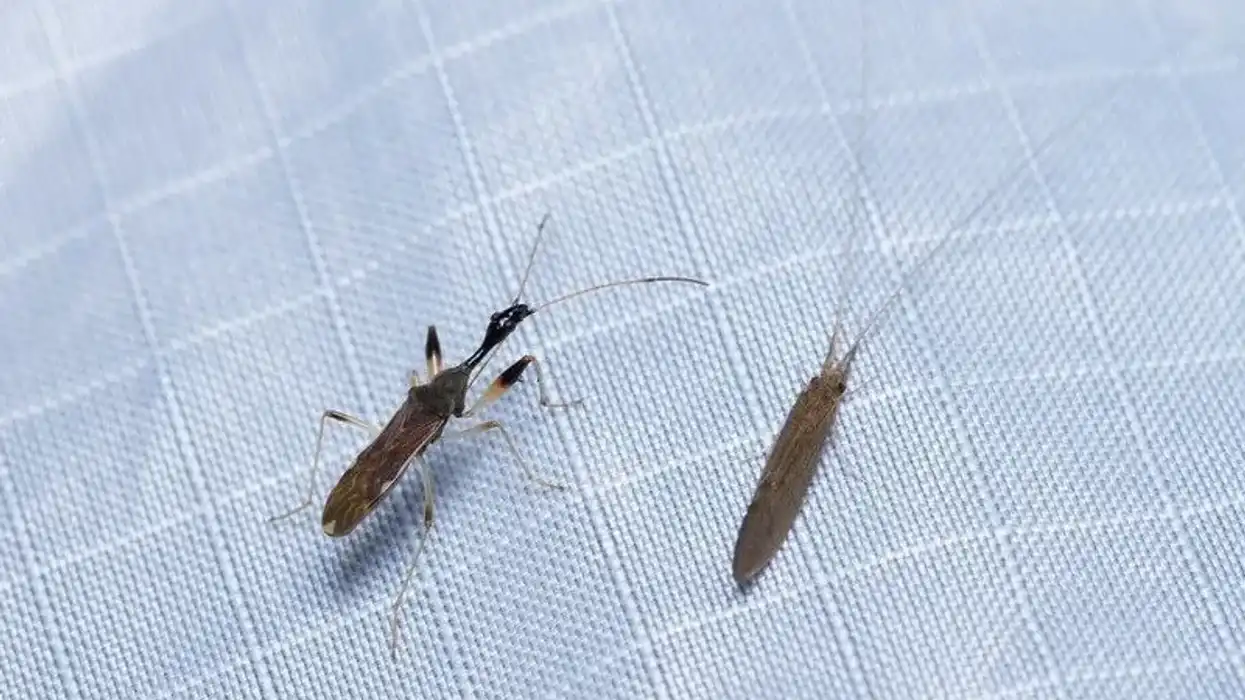Weasels are carnivorous mammals found in the Northern Hemisphere. With a characteristic tube-like slender body, long neck, small limbs, and a small flattened head, weasels belong to the genus Mustela which also includes polecats, ferrets, minks, and ermines.
The most widely distributed species of the weasels are the least weasel and the stoat (short-tailed weasel). Both primarily inhabit North America, with the least weasel being the smallest extant carnivore. However, the largest weasel found in North America is the long-tailed weasel (Neogale frenata).
Long-tailed weasels have a slender body, short legs, and a small head, typical of the members of the weasel family. These furry small mammals are mostly brown with a yellow or white tinge on the underside.
With a range that spans most of the United States, Mexico, Canada, Central America, and South America, long-tailed weasels are unique in having slightly different physical appearances depending on the region they inhabit.
For instance, in the northern parts, you can find a white long-tailed weasel because of its white fur color in the winter.
In contrast, a long-tailed weasel in the southwest is more likely to have white facial markings. But, even though the long-tailed weasel habitat is quite diverse, you will not find them in Arizona, Nevada, and southeast California.
Read on for more interesting and fun facts about these weasels of the Northern Hemisphere.
Like what you read? Then do check out interesting facts about flying squirrels and muskrat.
Long-Tailed Weasel Interesting Facts
What type of animal is a long-tailed weasel?
A long-tailed weasel (Neogale frenata) is a species of carnivorous mammal, scientifically known as the 'mustelids'.
What class of animal does a long-tailed weasel belong to?
Long-tailed weasels belong to class Mammalia of the Animal kingdom. They are different from rodents.
How many weasels are there in the world?
No data is available regarding the exact weasel population in the world. However, there are about 17 documented species of weasels and long-tailed weasels are one of them. According to the International Union for Conservation of Nature (IUCN), the population status of long-tailed weasels is stable.
Where does a long-tailed weasel live?
Long-tailed weasels mostly live in shrublands, grasslands, and wetlands of the temperate and tropical regions. Their habitats also include wooded areas, rocky outcrops, crop fields, and even suburban areas. They are rarely found in thick, dense woods or deserts.
What is a long-tailed weasel's habitat?
Long-tailed weasels have the largest geographical distribution among all mustelids found in the Western Hemisphere. Their habitat range begins from areas north of the United States-Canada border in North America and extends to Central America. These animals inhabit parts of northern South America as well.
The long-tailed weasels den beneath rock piles, in hollow logs, under tree stumps, or in-ground burrows. However, only these dens made out of rock piles, hollow logs, or tree stumps are what weasels construct themselves.
The burrows they live in are not their own and are taken over by killing their previous occupant. Long-tailed weasels may also occupy holes abandoned by chipmunks. The nest chambers usually have a diameter of around 8.7-11.8 in (22-30 cm) and are located about 24 in (60 cm) from the entrance of the burrows.
Who do long-tailed weasels live with?
Long-tailed weasels are primarily solitary animals. The home ranges of the males may extend into the home ranges of a few females but the home ranges of same-sex adult long-tailed weasels rarely overlap.
In fact, long-tailed weasels are pretty possessive of their individual home ranges and will usually exhibit aggressive behavior towards any intruder. It is only during the mating season that males and females interact.
How long does a long-tailed weasel live?
When it comes to the age and lifespan of the long-tailed weasels, most of these animals hardly ever cross the one year milestone. But if they happen to survive up to that age, they may continue living for several years into adulthood.
The exact lifespan of wild long-tailed weasels is not known. But those in captivity have an average lifespan of just over eight years.
How do they reproduce?
Long-tailed weasels are seasonal breeders and their mating season is around the mid-summer months, from July to August. They are viviparous (give birth to living young ones) and the young are usually born between April and May.
Even though the mating season takes place in the months of July and August, the process of implantation (attachment of the fertilized egg to the walls of the uterus) happens much later and the fertilized egg only begins to develop in and around the month of March.
This makes the average gestation period quite long, about 280 days. But the range of the gestation period can go up to 337 days.
After mating, a female long-tailed weasel gives birth to a litter consisting of an average of about five to eight young ones who weigh no more than 0.1 oz (3 g) at birth. The young long-tailed weasels are born with scanty white fur and their skin is wrinkly and pinkish.
Long-tailed weasels have a rapid growth rate and at about 14 days after birth, the white coat gradually becomes denser. Since the males are usually larger than females, the difference in size is obvious at this stage.
The offspring become abundantly furry at about three weeks of age, and they can move out of their nest and eat independently.
Their eyes open at about five weeks of age and it is at this stage that weaning begins. The young begin to kill and eat prey by themselves when they are about eight weeks of age.
What is their conservation status?
The long-tailed weasels fall under the Least Concern category in the International Union for Conservation of Nature (IUCN) Red List of Threatened Species. Their population status is stable.
Long-Tailed Weasel Fun Facts
What do long-tailed weasels look like?
Like most other weasels, the long-tailed weasel has a long, slender body with a long and bushy tail that makes up about half their body length. The tail has a black tip that makes it seem like it has been dipped in ink.
The average males are larger than females. The head of these animals is small and narrow with long whiskers and their legs are quite short.
The animals have cinnamon-brown fur all over the body but their underparts are yellowish or whitish.
Shedding of fur occurs in spring and in fall.
The color of the fur varies with the location of the habitat and the season (summer or winter); the body coat of the animals in the northern hemisphere is brown in summer and turns white in the winter, but the population in the southern hemisphere have a brown coat all the year-round.
*Please note that this is an image of a generic weasel. If you have an image of a long-tailed weasel please let us know at hello@kidadl.com.

How cute are they?
These furry and petite animals with their little head and short limbs look very adorable and cute!
How do they communicate?
Long-tailed weasels are excellent predators and that is because they have remarkable senses of sight, smell, and hearing. They communicate with their own kind through visual, auditory, and scent signals. Females give off a typical scent during the breeding season to attract the males.
Along with body language, long-tailed weasels use a variety of calls as a means of communication. These sounds include squeals, screeches, purrs, and rapid trills. The females make a high-pitched twittering call during the mating period.
How big is a long-tailed weasel?
In terms of length, the males are larger than the females. The average body length of the males ranges between 13-16.5 in (330-420 mm) and that of the females varies between 11-14 in (280-355 mm).
When it comes to comparing the body length of the long-tailed weasel to other animals, it can be said that these weasels are almost the same size as European mink.
How fast can a long-tailed weasel run?
No data is available regarding how fast these animals run. When they run, they do so in a series of bounds with their backs humped at every bound and the tail towing backwards. Besides, they are known to be skilled swimmers and climbers.
How much does a long-tailed weasel weigh?
The average bodyweight of long-tailed weasels ranges between 2.8-15.9 oz (79.4-450.7 g).
What are their male and female names of the species?
The females are often called jill, while the males may be called hob, jack, or dog.
What would you call a baby long-tailed weasel?
A baby long-tailed weasel is called a kitten or kit.
What do they eat?
Long-tailed weasels primarily eat small rodents. Their diet may also include birds, reptiles, berries, and fruits.
How active are they?
Long-tailed weasels are alert and agile animals. They are active all around the year and especially during the night when they hunt and kill prey.
Would they make a good pet?
A long-tailed weasel pet is illegal. Even though their cuteness can be misleading, it is best not to have them as pets because of their wild and aggressive nature.
Did you know...
The largest weasel in South America is the tropical weasel (Neogale africana).
The female becomes sexually mature at about three to four months while a male does so at 15 - 18 months.
Long-tailed weasels help control the population of rabbits and rodents.
These weasels give off a musky odor when threatened by predators such as foxes, coyotes, wolves, wild cats, and the Canadian lynx.
These weasels are successful at hunting rodents because their petite bodies can easily access and fit inside the burrows of rodents.
How to tell if it's a short tailed weasel or a long-tailed weasel?
It can be quite difficult to tell a long-tailed weasel apart from a short-tailed one, but the most obvious differences are that the former is larger with a longer tail.
When is the long-tailed weasel active?
Long-tailed weasels are mostly active during the night.
Here at Kidadl, we have carefully created lots of interesting family-friendly animal facts for everyone to discover! Learn more about some other mammals including tree kangaroos, or black-footed ferret.
You can even occupy yourself at home by drawing one on our weasel mask coloring pages.










